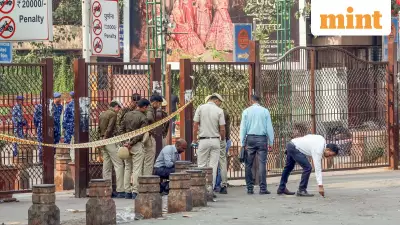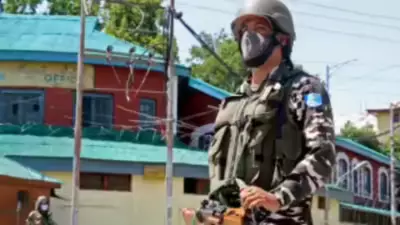
Patna witnessed unprecedented political activity as Bihar recorded a historic 68.7% voter turnout during the second phase of elections, sparking intense debates among experts about the underlying causes behind this massive participation.
Divergent Theories Behind Record Voting
The Election Commission described the polling percentage as the "historic highest-ever polls" in independent India's electoral history, surpassing the previous record of approximately 66.9% set in 1951. This remarkable achievement has triggered contrasting interpretations from political analysts and social scientists.
Social scientist B N Prasad from the Patna-based A N Sinha Institute of Social Studies presented a compelling theory, suggesting that the increased voting percentage reflects "the manifestation of Gen Z's desperation" due to diminishing job opportunities and frequent paper leak scandals.
"Whenever the voting percentage has increased, there has been a change in power," Prasad told TOI, drawing from historical patterns. He described the situation as a "silent revolution" driven by young voters who see their future as bleak amid rising unemployment and academic challenges.
Government Schemes and Voter Mobilization
Contrasting with the frustration theory, other experts pointed toward pro-government voting patterns resulting from welfare initiatives. The Mukhyamantri Mahila Rojgar Yojana (MMRY) played a significant role, with the NDA government crediting Rs 10,000 to approximately 1.25 crore women's bank accounts to support business ventures.
Former Patna College principal Nawal Kishore Choudhary emphasized that while increased voting typically indicates anti-incumbency, this case might represent pro-incumbency in Bihar. "The Nitish government launched many initiatives for women's empowerment, such as granting reservation to them in panchayat and local bodies polls and also gave Rs 10,000 to them," Choudhary explained.
Additional Factors Driving Voter Participation
Political analyst D M Diwakar, who also worked with the A N Sinha Institute of Social Studies, identified the Special Intensive Revision (SIR) panic as a crucial factor. The deletion of names of more than 65 lakh voters created anxiety among citizens, who rushed to polling booths fearing exclusion from voter lists and subsequent denial of government welfare schemes.
Diwakar also noted that Tejashwi Prasad Yadav's job offers to youth attracted significant attention from the younger demographic. Additionally, the enforcement of liquor ban, which has reportedly reduced domestic violence, and aggressive voting by Muslims against the present regime contributed to the complex voting dynamics.
Choudhary observed that voter polarization was particularly sharp this time, with both pro-Modi and anti-Modi voters demonstrating strong mobilization. Despite the tough fight between NDA and INDIA bloc, he suggested that NDA maintains a slight edge based on theoretical understanding and voter behavior analysis.
Chief Election Commissioner Gyanesh Kumar celebrated Bihar's achievement, stating that "Bihar is showing the way to the country" in terms of democratic participation. The extraordinary voter turnout has set the stage for what promises to be a closely contested electoral outcome with significant implications for Bihar's political future.





